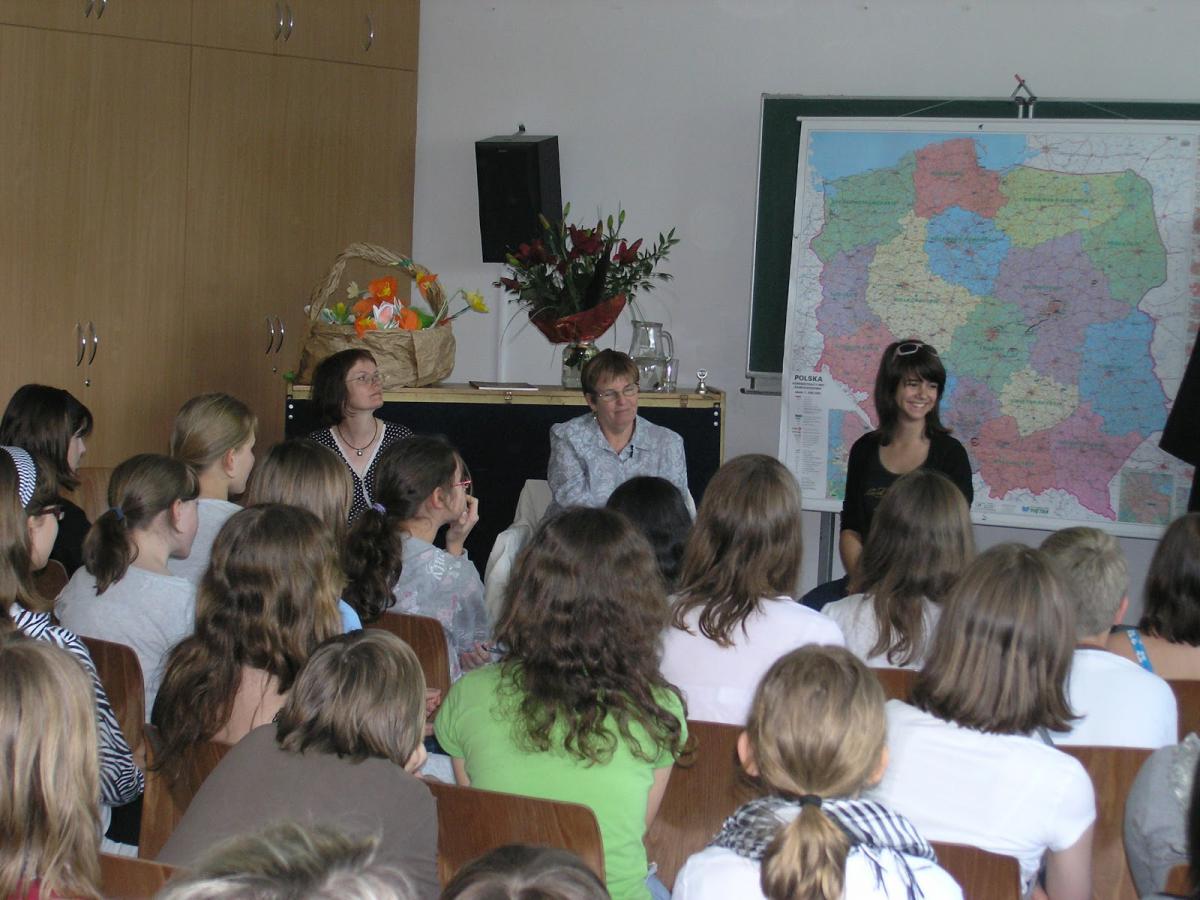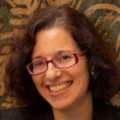

In 1935, Hannah Gofrit was born in Biala Ravska, Poland, a town where Jews and Poles had lived and worked together for generations. She had a wonderful childhood until WWII broke out in September 1939. I Wanted to Fly Like a Butterfly provides a touching account of Hannah’s experiences as a little girl before, during and following the Holocaust. This children’s book has been translated into a number of languages, including Spanish, French and Romanian.
At the end of the book, written by Naomi Morgenstern and published by Yad Vashem, Hannah personally invites her readers to write to her. She states, “I have now told you a small part of the story that I always carry with me. I would be happy to answer your questions or hear your thoughts about my story. Please write to me in Israel. Here is my address and I look forward to hearing from you.”
For example, a German teacher sent Gofrit the following postcard:
“Dear Mrs. Gofrit,
It is now the third or fourth time that I read your book with my students in school. Every time the students are touched. Thank you for having written that book. It is very valuable. Shalom be with you. Sincerely, Birke Thiel.”
An Italian pupil, Francesco Busi, sent her a drawing of a butterfly with the following message:
“Ciao Hanna! I’ve enjoyed your book very much because I have learned that in life we must never surrender, even in the most dreadful situations, like the ones you experienced.”
Paulo Perneta from the Ashgreen School in the United Kingdom sent Gofrit the following moving letter,
“Dear Chana,
Miss Hagan has read us your story. I felt sad reading about your life. I thought you were brave for hiding in the pig-pen in someone else’s house. Why did you go to Israel? Do you feel happy now its over?
From this topic I have learned to never judge a book by its cover and not to commit genocide. I think no one will ever go through genocide. I will never forget this so it doesn’t happen again. I hope to hear from you soon.”
Chana Karpel, a fourth grade student of the Hebrew Academy Community School in southern Florida, wrote the following email:
“Dear Ms. Gofrit,
My Hebrew teacher, Morah Maty, read to us your book. I enjoyed the wonderful, brave adventures that you had with your family. My question is, what ever happened to the daughters of the Polish family that rescued you, Chankeh and Basha? Did you ever see them again? Thank you for publishing a Hebrew book that I could enjoy.
Love, Chana Karpel from the Hebrew Academy Community School
Ps. I like that we have the same name.”
Gofrit responded to Karpel by email, noting that Chankeh lives today in Warsaw and Basha lives in the Netherlands. She maintains continuous contact with them.
Gofrit’s story has also touched the hearts and minds of older pupils as well. For instance, a few years ago, Maria Borzecka, an educator at the Willy Brandt Bilingual German-Polish School in Warsaw, participated in an intensive teacher-training seminar designed for teachers from throughout Poland at Yad Vashem. Since then, she has maintained a close relationship with Hannah Gofrit.
After reading Gofrit’s story, Borzecka decided to visit 64 Zelzenah Street in Warsaw where Gofrit hid for two years with her mother in the apartment of the Skovroneck family who have been recognized by Yad Vashem as Righteous among the Nations.
As a result, Gofrit and her family visited Borzecka’s school in the Polish capital, met with her students, answered their questions and admired their colorful art projects inspired by Hannah’s personal story.
According to Gofrit, her personal relationship with Borzecka has been particularly meaningful. “As a six-year-old girl during the Shoah, I was not allowed to attend first grade together with my friends in Poland. This painful childhood experience has never left me. Visiting Maria’s school in Warsaw with my husband and son has brought me closure, and I feel as though I have come full circle. Since then, I have started to read in Polish again and speak more freely in my mother tongue.”
Gofrit’s childhood recollections have clearly inspired many students and teachers, including those educators who had aired reservations about addressing the subject of the Holocaust to primary school children.
Gofrit sincerely appreciates all of the mail that she receives from young readers in a plethora of languages. Her personal story has unquestionably left an educational legacy.
This pedagogical, age-appropriate resource, frequently modeled within the framework of teacher-training seminars organized by Yad Vashem, is now being successfully implemented in classrooms across the globe.











